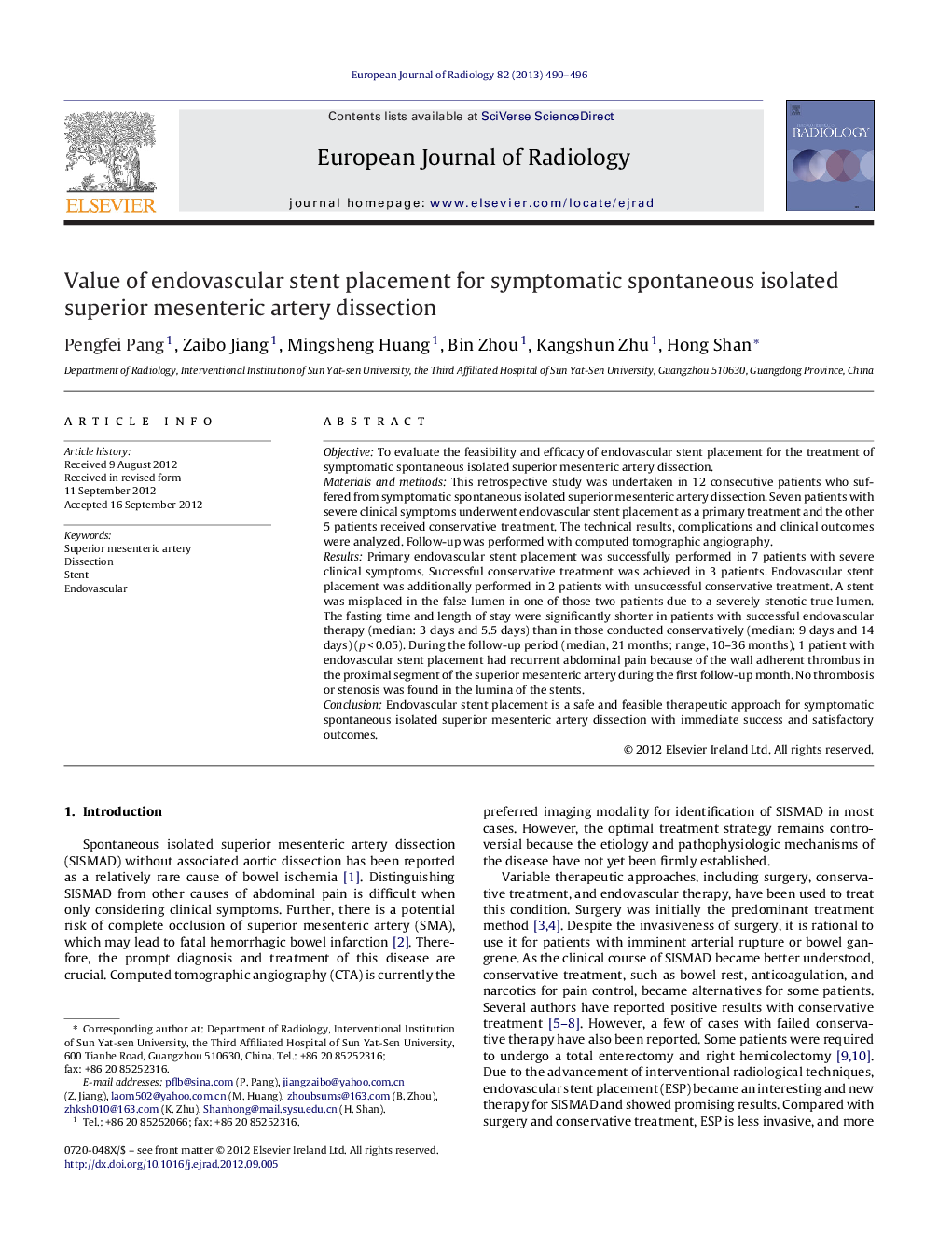| Article ID | Journal | Published Year | Pages | File Type |
|---|---|---|---|---|
| 4226015 | European Journal of Radiology | 2013 | 7 Pages |
ObjectiveTo evaluate the feasibility and efficacy of endovascular stent placement for the treatment of symptomatic spontaneous isolated superior mesenteric artery dissection.Materials and methodsThis retrospective study was undertaken in 12 consecutive patients who suffered from symptomatic spontaneous isolated superior mesenteric artery dissection. Seven patients with severe clinical symptoms underwent endovascular stent placement as a primary treatment and the other 5 patients received conservative treatment. The technical results, complications and clinical outcomes were analyzed. Follow-up was performed with computed tomographic angiography.ResultsPrimary endovascular stent placement was successfully performed in 7 patients with severe clinical symptoms. Successful conservative treatment was achieved in 3 patients. Endovascular stent placement was additionally performed in 2 patients with unsuccessful conservative treatment. A stent was misplaced in the false lumen in one of those two patients due to a severely stenotic true lumen. The fasting time and length of stay were significantly shorter in patients with successful endovascular therapy (median: 3 days and 5.5 days) than in those conducted conservatively (median: 9 days and 14 days) (p < 0.05). During the follow-up period (median, 21 months; range, 10–36 months), 1 patient with endovascular stent placement had recurrent abdominal pain because of the wall adherent thrombus in the proximal segment of the superior mesenteric artery during the first follow-up month. No thrombosis or stenosis was found in the lumina of the stents.ConclusionEndovascular stent placement is a safe and feasible therapeutic approach for symptomatic spontaneous isolated superior mesenteric artery dissection with immediate success and satisfactory outcomes.
